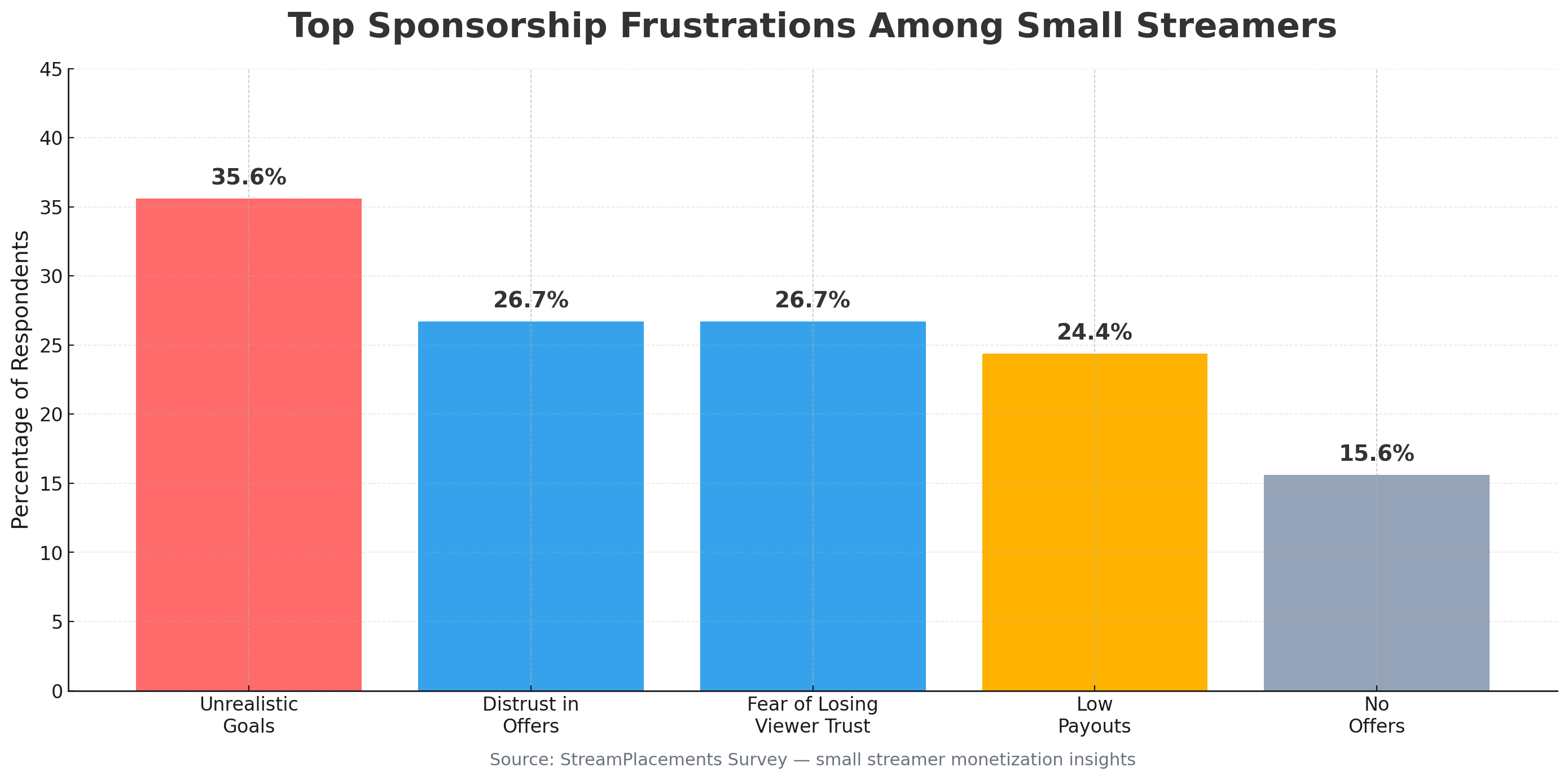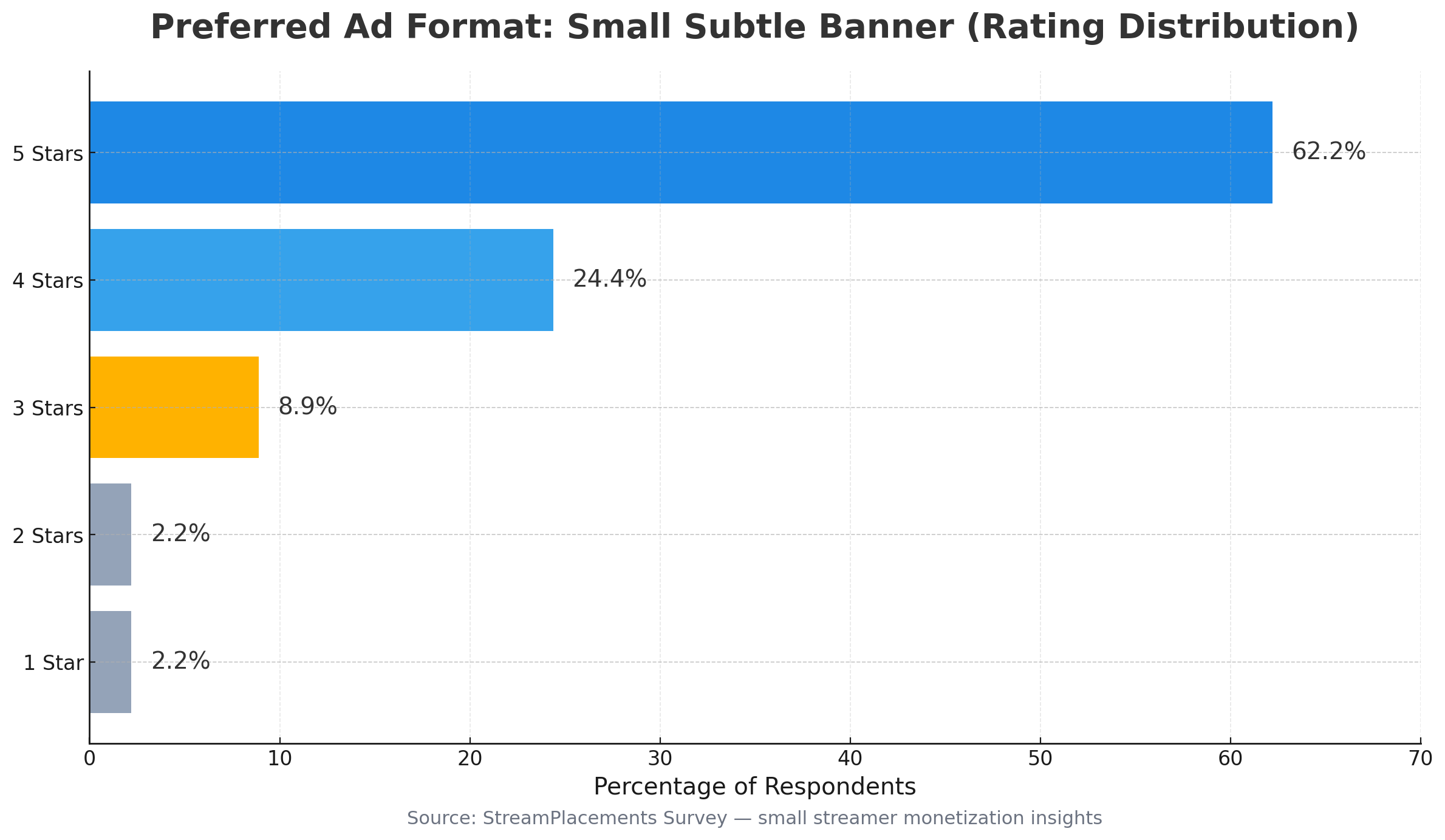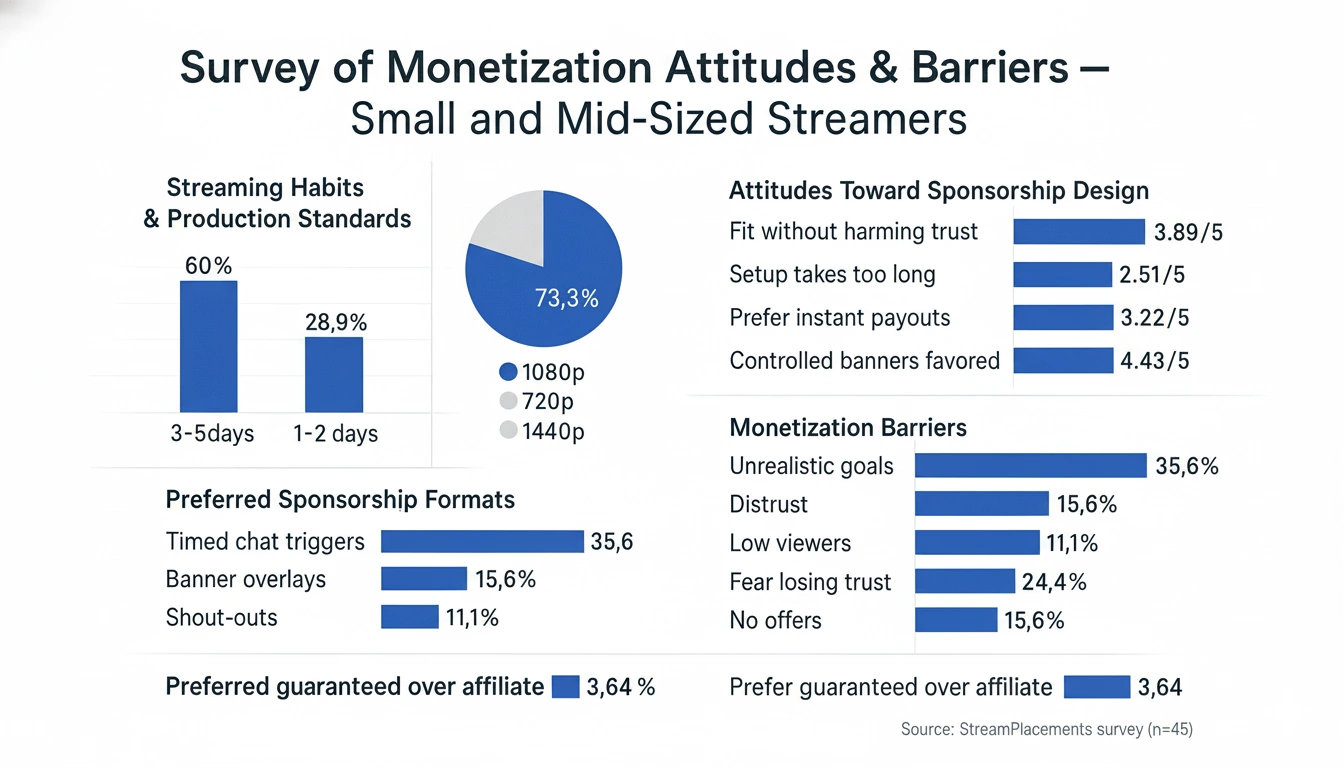Sponsorship Opportunities for Small and Medium-Sized Streamers: A Survey of Monetization Attitudes and Barriers
Live streaming is a core pillar of the creator economy. Platforms such as Twitch, YouTube Live, and Kick enable creators to broadcast in real time and cultivate highly engaged communities. For many small Twitch streamers, monetization is essential to sustaining their work, yet traditional income sources—platform ads, donations, and subscriptions—are often insufficient, especially for channels averaging ~100 or fewer concurrent viewers.
Sponsorships and product placements offer a promising revenue channel and are frequently explored by creators searching for how to get stream sponsorships, paid sponsorships for Twitch streamers, and monetization ideas for small streamers. However, compared with top-tier influencers, micro-streamers face distinct challenges: reduced bargaining power, limited discoverability, a lack of sponsorship marketplaces tailored to low-viewer channels, and heightened sensitivity to audience trust.
Existing influencer research largely focuses on high-reach creators, leaving less clarity on how smaller streamers perceive sponsorship opportunities or what prevents access to sponsorship deals for streamers under 100 viewers. As marketers investigate micro-influencer marketing in gaming, it is crucial to understand this under-represented segment.
This article summarizes a targeted survey of small and mid-sized streamers and analyzes attitudes toward sponsorships and product placements. The goal is to clarify barriers and enablers that influence whether sponsorships become a meaningful income source for emerging creators.
Results
Streaming habits and production standards
- Frequency: 60% stream 3–5 days/week; 28.9% stream 1–2; 11.1% stream 6–7.
- Quality: 73.3% broadcast at 1080p; 24.4% at 720p; 2.2% at 1440p.
- Multistreaming: 84.4% use a single platform; small shares stream to YouTube (8.9%), TikTok (8.8%), and Kick (2.2%).
Overall, creators seeking how to make money as a small streamer are already investing in production quality and viewer experience.
Sponsorship experience and formats used
- Experience: 46.7% have completed at least one paid Twitch sponsorship; 53.3% have not.
- Formats used: on-stream overlays/banners (100%), verbal shout-outs or product placement (76.2%), affiliate codes/discounts (57.1%), sponsored posts/videos (38.1%).
- Compensation models: impressions + referrals (42.9%), impressions only (33.3%), referrals only (23.8%).
These formats align with non-intrusive ads for Twitch streams and interactive brand promotion on livestreams.

Positive sponsorship drivers
- Audience engagement: cited by 57% as the top success driver.
- Content-fit & authenticity: 43% — alignment with the channel matters.
- Fair compensation & clear terms: 33% and 29% respectively.
These factors align with creator demand for viewer-friendly sponsorship integration.
Frustrations and barriers
- Unrealistic conversion-based goals: 35.6%.
- Distrust in sponsorship offers: 26.7%.
- Fear of harming viewer trust: 26.7%.
- Low payout levels: 24.4%.
- Never received an offer: 15.6%.
These concerns also motivate searches like how to avoid scam sponsorship offers Twitch.

Attitudes toward sponsorship design
- Fit without harming trust: avg. 3.89/5.
- Setup “takes too long”: avg. 2.51/5 (disagreement).
- Preference for faster payouts: avg. 3.22/5.
- Subtle banner formats: avg. 4.42/5 (highest-rated item).
Respondents prefer controlled, contextual placements similar to interactive chat-triggered sponsorships and Twitch banner monetization.

Desired improvements
- Realistic goals by channel size: 31%.
- Transparent, reliable payouts: 22%.
- Better brand–content alignment: 20%.
- More accessible offers for low-viewer streamers: 18%.
Taken together, these issues are structural rather than individual.
Discussion
Professional effort, limited upside
Frequent streaming and high-resolution output indicate strong professional commitment, yet compensation models do not consistently match that effort for smaller audiences.
Trust and authenticity dominate decision-making
Preserving audience relationships outweighs short-term revenue. Integrations must be transparent, minimal, and aligned with content to maintain trust.
Performance-only structures disadvantage small streamers
High referral thresholds and delayed payouts favor larger channels. Guaranteed minimums and hybrid models improve fairness and predictability.
Discovery and access remain weak
A meaningful share of respondents has never received an offer, underscoring the need for better sponsorship platforms for small streamers and improved brand–creator matching.
Non-disruptive formats are preferred
Creator-controlled banners and optional chat activations are favored over intrusive overlays or spammy chat prompts.
Collaboration beats transaction
Flexible briefs, creative freedom, and two-way communication improve campaign quality and outcomes.
Strategic Implications
| Stakeholder | Implication |
|---|---|
| Advertisers & brands | Partnering with micro-streamers provides access to highly engaged niche communities with lower entry costs. |
| Sponsorship platforms | Automated payouts, verified offers, and scalable onboarding for small streamers are critical to growth. |
| Streamers | Non-intrusive formats and viewer-aligned brands protect community trust and support sustainable monetization. |
| Researchers | Small-creator monetization patterns differ from top-tier influencers and warrant independent frameworks. |
Reference
Analysis and survey conducted by StreamPlacements — research and insights on sponsorships with small and mid-sized streamers .
For practical steps on applying these survey insights to your own channel, visit the Ultimate Small Streamer Guide — a hands-on roadmap for small creators covering growth, retention, monetization, and tax basics.

